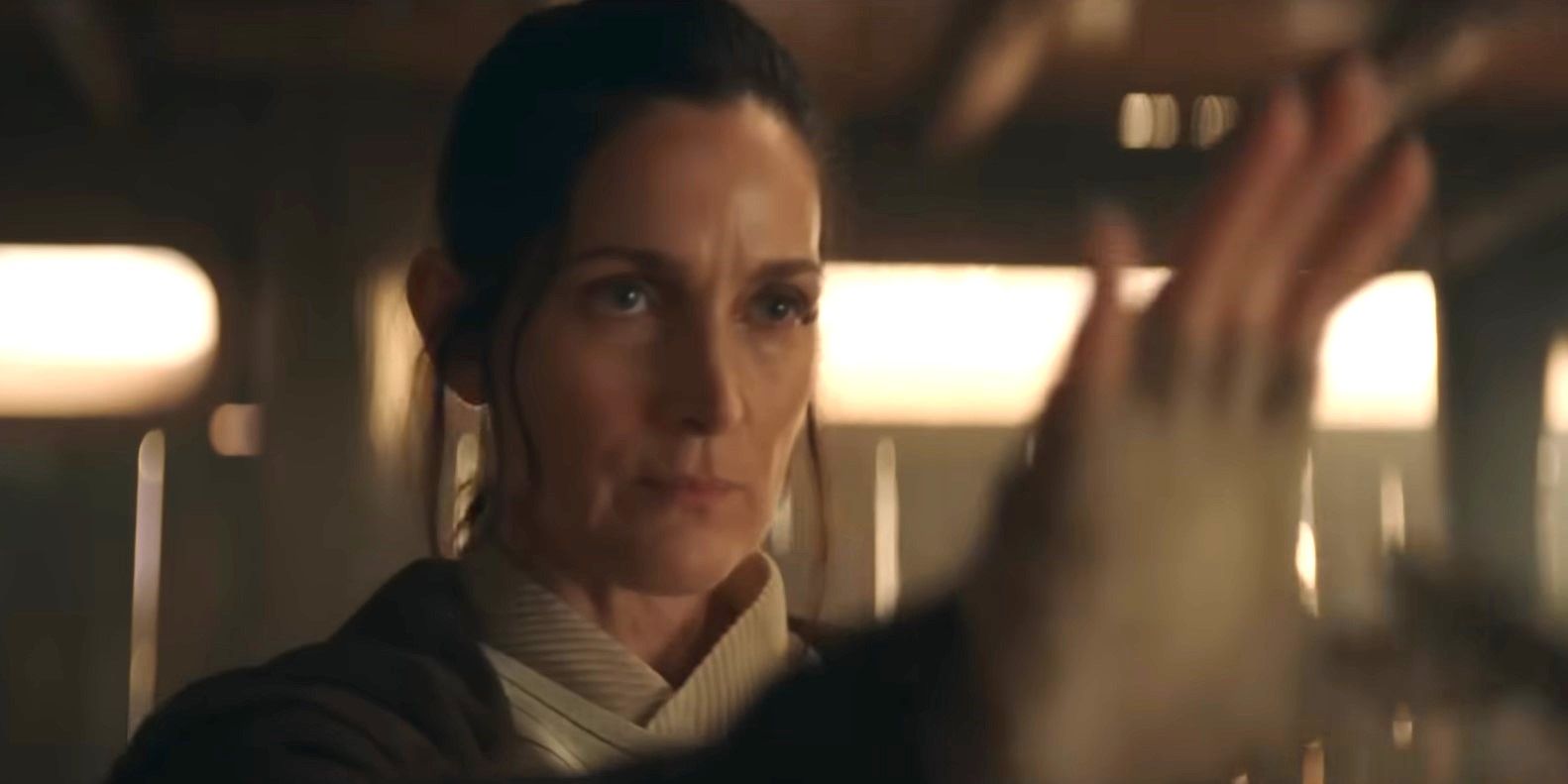
However, The Acolyte has also confirmed that some concepts previously introduced in the franchise have existed in the Star Wars universe for generations. One such concept is the Star Wars fighting style Force-Fu, which combines the powers of the Force with a martial arts fighting style modeled off the real-world Kung Fu, a broad term for Chinese martial arts. Force-Fu, first seen in Ahsoka, has returned in Star Wars’ newest TV show, and The Acolyte showrunner Leslye Headland has already verified its name and its significance in the show.
How Real-World Martial Arts Influence “Force-Fu”


![Indara (Carrie-Anne Moss) being threatened with a dagger in The Acolyte - S1 [STAR WARS]](https://static0.srcdn.com/wordpress/wp-content/uploads/2024/05/the-acolyte-s1-star-wars-2-1.jpg)




![Indara (Carrie-Anne Moss) being threatened with a dagger in The Acolyte - S1 [STAR WARS]](https://static0.srcdn.com/wordpress/wp-content/uploads/2024/05/the-acolyte-s1-star-wars-2-1.jpg)


The Acolyte showrunner Leslye Headland has confirmed that Force-Fu was directly influenced by Kung Fu. Specifically, casting Carrie-Anne Moss as Jedi Master Indara was linked to Moss’ role as Trinity in the Matrix franchise, which heavily featured Kung Fu. In an interview with Empire Magazine, Headland explained:
“I personally wanted to see someone who had the highest status you could imagine in a Force-fu fight – somebody that would come in and you immediately would be like, ‘Oh, that’s the most powerful Jedi in the room. And that’s Trinity.”
Not only does this statement from Headland make clear where this Acolyte fighting style originated, but it also confirms that Force-Fu is in fact the canon name for the fighting style.
Similarly, Carrie-Anne Moss has discussed the influence that Kung Fu had on this martial arts form used in The Acolyte, specifically highlighting its unique relationship to the Force. Speaking to Good Morning America, Moss said:
“They had a woman on set who helped you discover your way that you would do that. Bring that Force in, and so they used a lot of kung fu moves. The fighting is all really based in kung fu, and then just finding your way of doing the Force. I just trusted that I would know, but I did have some help.”
Moss’ quote makes clear what is so unique about the Force-Fu style. Beyond just pulling from martial arts, The Acolyte considers how such a style would integrate with Force abilities. Ultimately, this worked by having Master Indara favor the use of defensive moves rather than going on the attack. This is quite different from the fighting style of the Jedi in the prequel trilogy, who often went full offensive once a fight had begun.
This is quite different from the fighting style of the Jedi in the prequel trilogy, who often went full offensive once a fight had begun.
Completely to the contrary, Moss’ scene in The Acolyte shows Indara blocking and dodging Mae’s attacks and making moves to prevent her from continuing the assault; she doesn’t attempt to harm Mae. In fact, it isn’t until the extent of the threat has become clear to her that Indara draws her lightsaber. This is also interesting because it prioritizes hand-to-hand combat, which has been much less common in Star Wars’ other movies and shows.
Force-Fu Fits Perfectly With The Defensive Jedi Style

Force-Fu has appeared in one other Star Wars show, however. The fighting style was introduced in Ahsoka, when Ezra Bridger fights Shin Hati on Peridea. Just as Master Indara did, Ezra focuses on blocking and self-defense and doesn’t jump right to using a lightsaber as so many Jedi would. In truth, this fighting style of Force-Fu perfectly fits the ideals the Jedi are supposed to uphold.
Rather than harming or killing, the Jedi are meant to protect others and keep the peace. This martial arts form is much truer to that goal than the use of lightsabers. However, the name of the Force fighting style is a bit unfortunate. The wordplay of the term comes across as a joke more than a legitimate fighting style, and it has the potential to co-opt Kung Fu in a problematic way. Even so, Force-Fu is officially canon, and, based on Star Wars: The Acolyte, it seems the new Force fighting style is here to stay in Star Wars.





